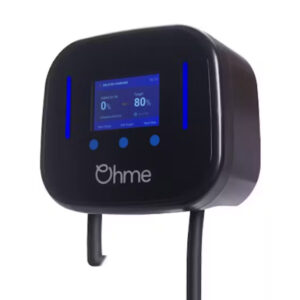At a petrol station you can get your EV fully charged by the time you’ve finished a Starbucks…
But when charging at home, it takes s long as the recommended 8-hour sleep?
Well, it comes down to the available electrical current. Boring I know but stay with me.
Now we didn’t know this until we did our research.
The power that comes from the grid is always AC (alternating current). But power stored in batteries is DC (direct current).
AC and DC are two entirely different types of electrical current. Both travel in different directions, flow at different speeds, and have different applications.
AC power can be efficiently transported over long distances, which is why virtually all the world’s electricity grids use it.
Batteries store DC power, and though you may never have realised, every time you charge your laptop, the charger converts the AC power from the grid into DC for your laptop’s battery.
In short, we get AC power from the grid, and this is converted into DC power so it can be stored in batteries, such as the one used to power an electric vehicle.
When we talk about charging an EV, the main difference between AC and DC charging is where the conversion from AC to DC happens, and how long this takes.
When charging with a home charge point the units are small with no capacity to convert AC to DC power, so this is done by the electric vehicle, and it takes time.
When you use a DC charging station outside Starbucks, the conversion from AC to DC happens within the charging station.
Because the conversion happens in the large DC charging station and not the electric vehicle, larger converters can be used to convert AC power from the grid very quickly.
…as a result, some DC stations provide up to 350 kW of power and fully charge an EV in 15 minutes.


